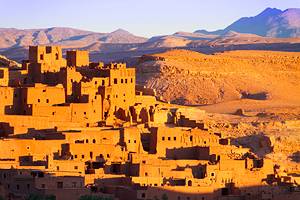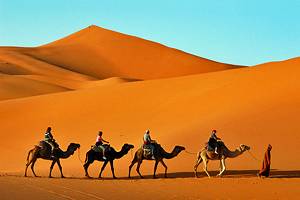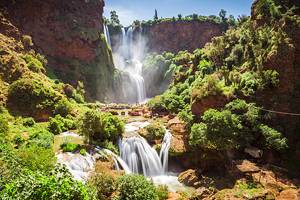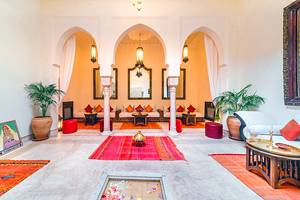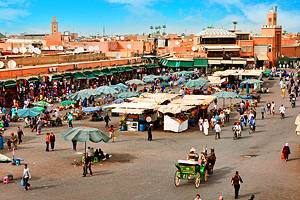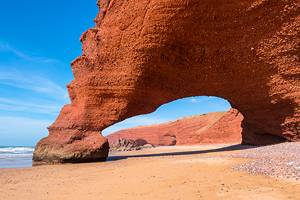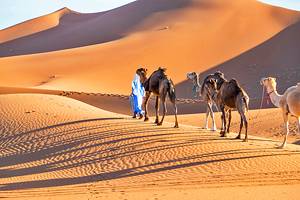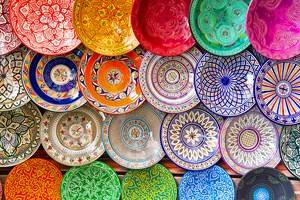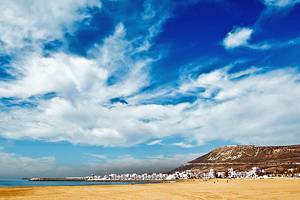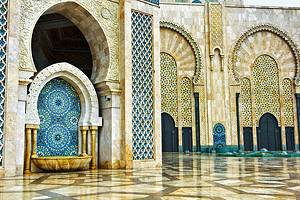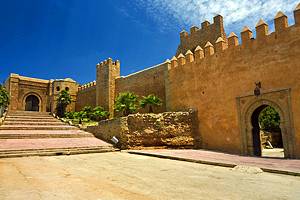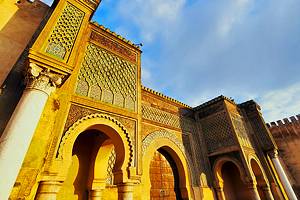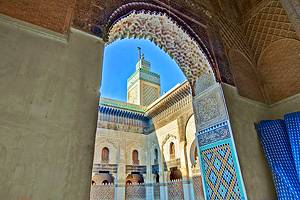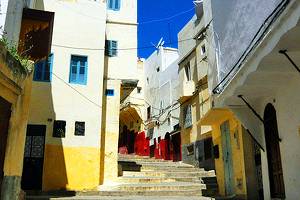Things to Do in Morocco's High Atlas Region
Morocco's rugged High Atlas region is home to the country's most raw and spectacular scenery. Villages snuggle into deep valleys or cling precariously to mountain slopes. Snowcapped peaks shimmer on the horizon, while below a carpet of lush green fields rolls out before you.

This is the best place to visit in Morocco for outdoor activities, with hiking, climbing, and mountain biking the most popular things to do.
If working up a sweat isn't on your agenda, the High Atlas also offers plenty of historic tourist attractions. The mudbrick kasbah of Ait Ben Haddou is the region's most famous sight but there's a wealth of traditional kasbah and ksour architecture to explore throughout the region, along with stunning mountain scenery to soak up.
Check out what not to miss with our list of the top things to do in Morocco's High Atlas region.
- Visit the Magnificent Ksar of Ait Ben Haddou
- Climb Jebel Toubkal
- Hike in the Dades Valley
- Admire the Ouzoud Waterfalls
- Road Trip through the Draa Valley
- Rock Climb or Hike in the Todra Gorge
- Trek the Toubkal Circuit
- Explore the High Atlas Base Town of Ouarzazate
- Discover the Kasbahs & Countryside around Telouet
- Explore the Villages of Ait Bouguemez Valley
- Enjoy the Mountain Scenery of the Ourika Valley
- Map of Things to Do in Morocco's High Atlas Region
Visit the Magnificent Ksar of Ait Ben Haddou

The mudbrick ksar (fortified village) of Ait Ben Haddou has to be one of Morocco's most photogenic buildings.
Its bulky adobe fortifications stand amid lush fields and orchards of almond trees, overlooking the barren cliffs of the Ounilla Valley, looking as if it has burst organically from the ground.
Ait Ben Haddou's history stretches back to the 11th century, when it was an important stop on the trans-Saharan caravan routes. Today very few villagers inhabit the actual complex, with most families living in the modern village outside the fortified walls.
As one of the finest mudbrick-constructed buildings in the country, it is UNESCO World Heritage listed, and its beauty has charmed Hollywood for decades. Scenes from Lawrence of Arabia, Jesus of Nazareth, and Gladiator, among many others, have all been filmed here.
For the best photos of the surrounding countryside, climb up into the kasbah turrets.
Ait Ben Haddou is 30 kilometers northwest from Ouarzazate and 170 kilometers southeast from Marrakesh. It's a very popular day trip destination from both towns, as well as a major High Atlas stop-off destination for trips heading to the Sahara dunes, so don't expect to have the place to yourself.
Climb Jebel Toubkal

At 4,167 meters above sea level, Jebel Toubkal is North Africa's highest peak and Morocco's most popular mountain ascent.
At the base of the mountain, the village of Imlil is fully set up for trekkers who want to tackle the two-day guided ascent to Toubkal's summit with abundant accommodation and guide services.
During summer, the mountain trek is non-technical, though scree slopes and altitude make the trek challenging. Nevertheless, this is the High Atlas's most popular trek.
Most trekkers overnight at the Toubkal Refuge at the end of the first day's trek before a very early start the next morning to head to the summit before descending on the same route.
Imlil is only 67 kilometers south from Marrakesh, so the trek is an easy High Atlas add-on to a trip to the city.
Hike in the Dades Valley

The Dades Valley is one of Morocco's prime walking and hiking destinations due to the weird rock formations, crumbling kasbah buildings, tiny villages, and stunning mountain scenery inside the gorge.
Nature-lovers should keep their eyes peeled for eagle and lammergeyer (bearded vulture) sightings, while trekking fans will simply just love the empty trails here. The switchback road into the valley is an experience in itself.
Several interesting villages are in the nearby vicinity and are worth adding into a trip here.
El Kelaa M'Gouna is the center of Morocco's rose-growing region (used for the famed rose essence), and being here in spring when the flowers bloom is delightful. A souk is held here every Wednesday.
The village of Azlag is renowned for producing the most finely worked daggers in the country, and is home to approximately 120 working blacksmiths. The kasbah is the main sightseeing attraction in the village.
Admire the Ouzoud Waterfalls
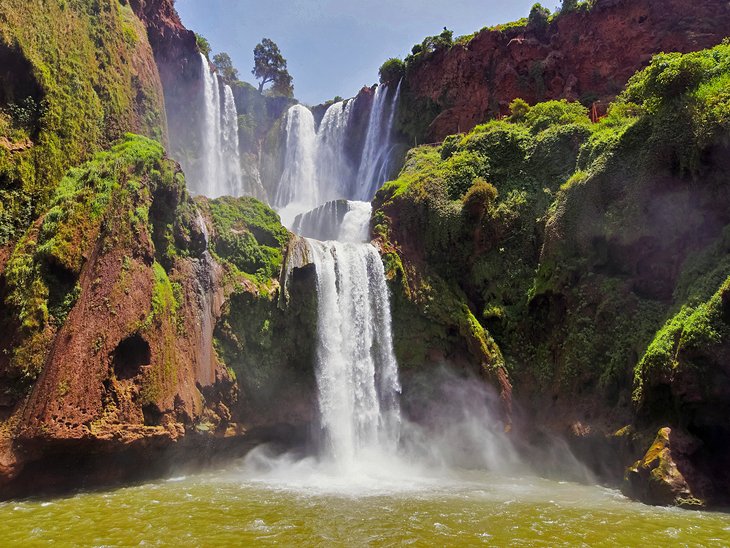
The Ouzoud Waterfalls (Cascades d'Ouzoud), on the edge of the village of Ouzoud, are one of Morocco's top natural sightseeing attractions, with the water plunging for 110 meters over three waterfall tiers.
The cascades are popular with both local tourists (who come here for weekend picnics) and foreign travelers, and the gorge you hike into to view them from can get busy, particularly when day-trip buses from Marrakesh turn up.

If you're lucky enough to arrive at the cascades after a lot of rain, the water runs red-brown, creating a highly dramatic and rather otherworldly effect.
Ouzoud is 156 kilometers northeast from Marrakesh and 27 kilometers west of the town of Azilal. Most people come here on a day trip from Marrakesh, but both Ouzoud and Azilal have accommodation options if you want to see the cascades without the crowds.
Road Trip through the Draa Valley

The Draa Valley is the gateway to one of Morocco's most famous desert dune fields in the Sahara region beyond, but this High Atlas valley itself is a thoroughly interesting place to visit, with kasbahs (fortified buildings) and ksour (fortified villages; the plural of ksar) architecture and palm grove scenery.
The multitude of traditional mudbrick fortifications along the valley floor is due to the Draa Valley being the route of the trans-Saharan caravans.
Agdz and Tamnougalt are the best places to stop off in the valley. Agdz has two kasbahs that can be explored, while Tamnougalt's labyrinthine ksar is one of the oldest in Morocco.
At the southeastern end of the valley, you'll find Zagora, where the valley ends and Morocco's Sahara region begins.
Zagora has plentiful accommodation options, so it's the Draa Valley's best base. If you're heading into the desert, it's a great place to overnight before driving onwards to the oasis of M'Hamid, which is the base for excursions to the Erg Chigaga dunes.
Rock Climb or Hike in the Todra Gorge

Hemmed in by vast pink- and orange-hued rock walls, the 14-kilometer-long and 300-meter-deep Todra Gorge is Morocco's prime rock-climbing destination and is also popular with trekkers and 4WD tours.
The most popular hike here is the Todra Loop, which takes in some of the best gorge scenery. For climbers, the Pillar du Couchant area in the gorge offers plenty of rock-climbing routes.

There are cafés and other services along the gorge basin, as well as some accommodation. And if you've been spending too much time in the cities on your travels, this quiet area makes for an especially peaceful retreat.
Trek the Toubkal Circuit

Morocco's High Atlas has plenty of multi-day trekking routes, but the Toubkal Circuit is among the most popular.
Starting from Imlil and traversing 60 kilometers in a circular route through the hill country surrounding Jebel Toubkal (with an ascent to the mountain's summit on the second to last day), the Toubkal Circuit offers some of the best scenery in the High Atlas, as well as an excellent opportunity to acclimatize properly before tackling Jebel Toubkal.
The trek takes seven days, though some trekkers decide to extend it to break it up into shorter walking days, and/or include a rest day.
Imlil has many trekking operators who can organize Toubkal Circuit trips including guides, mule hire (for carrying packs), and trekking equipment hire.
Explore the High Atlas Base Town of Ouarzazate

Located on the crossroads between the Draa, Dades, and Ziz Valleys, Ouarzazate is home to the magnificent Taourirt Kasbah.
Surrounded by dramatic landscapes that are beloved by film crews (scenes from Gladiator, Kundun, and Alexander the Great have all been filmed in the surrounding countryside), this town has become a popular base before setting out on excursions farther into the High Atlas region.
The weekly Sunday market is a vibrant affair that sells everything from produce to craftwork. Don't miss it if you're in town at the time.
Taourirt Kasbah is town's only real sightseeing attraction. Built in the 19th century, the kasbah was used extensively by the Glaoui family in the early 20th century, who ruled over much of this region during that time.
The Tifoultoute Kasbah is nine kilometers west of town. It's a wonderfully well-preserved mudbrick fortress, with jaw-dropping views from the tops of its towers, where storks can often be seen nesting. Built in the early 20th century, this Kasbah, like the one at Ouarzazate, was constructed for the Glaoui family, who once ruled over this area.
Discover the Kasbahs & Countryside around Telouet
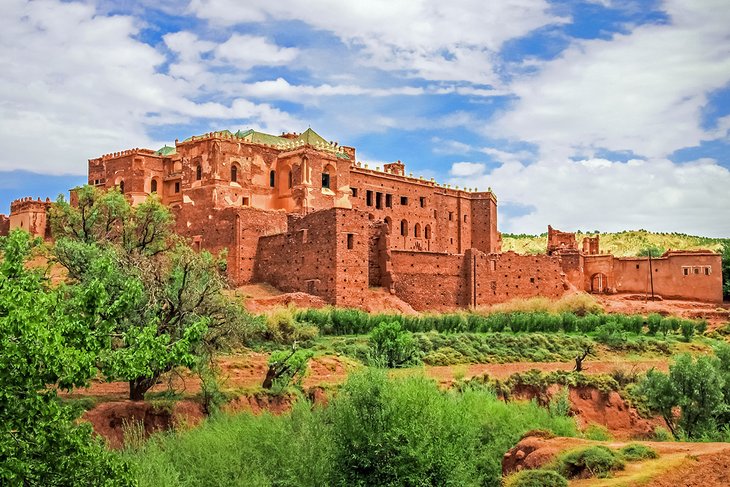
Often visited on day trips from Marrakesh, Telouet's kasbah is a mighty fortress built in the 19th century (and extensively extended in the early 20th century) by the ruling El Glaoui family.
Pasha Thami El Glaoui became the ruler of Marrakesh after aligning himself with the French colonizing forces.

The kasbah is an atmospheric, though much dilapidated, place, with a warren of rooms inside that still feature some of their original sumptuous decorations.
Telouet is an excellent base for exploring the surrounding countryside, particularly 4WD trips and hikes in the Ounila Valley between isolated traditional villages. In particular, don't miss Anmiter with its crumbling kasbah.
Explore the Villages of Ait Bouguemez Valley
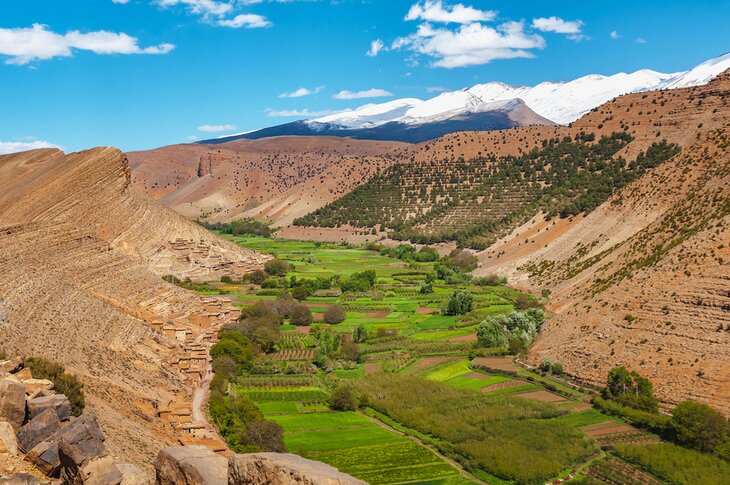
Ait Bouguemez, in the north of the High Atlas, offers stunning scenery of the valley's lush farmland rimmed by rugged bare foothills backgrounded by snowcapped peaks.
The valley's villages have held onto much of their traditional mudbrick character, and there is plenty of choice of friendly and simple family-run guesthouses speckled throughout the area, particularly around the village of Tabant, making this a popular nature getaway for anyone who enjoys hiking, nature, and exploring local culture.
The large mudbrick circular shrine of Sidi Moussa (a local Muslim holy man) sits on a hill within the valley and is a major landmark, while walks between the valley's villages make for easygoing hikes.
Those here specifically for more adventurous trekking opportunities will either want to tackle the 4,068-meter-high summit of Irhil M'Goun, or head out on the four-day M'Goun Traverse trek, which starts from the village of Agouti.
Access to Ait Bouguemez Valley is usually from the town of Azilal, 70 kilometers to the north. Azilal itself is 165 kilometers east of Marrakech. There isn't much in the way of public transport from Azilal, so many people choose to come here as part of a tour or by self-driving.
Enjoy the Mountain Scenery of the Ourika Valley

One of the easiest parts of the High Atlas region to visit from Marrakesh (only 50 kilometers west of the city and within easy reach for weekender tourists and day visitors), the Ourika Valley is one of Morocco's most popular regions for outdoor activities.
Surrounded by lush green fields, this valley is home to stunning waterfalls and some excellent hiking trails.
Most day-trippers head to the village of Setti Fatma, from where there's a hike-scramble up to nearby waterfalls and plenty of panoramic views of mountain peaks in the distance.
The village is also a good base for farther forays, as well as being the start of the Jebel Yagour trek which usually takes three days.
Map of Things to Do in Morocco's High Atlas Region
More Related Articles on PlanetWare.com
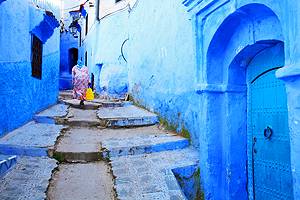
The Mountains and Onwards: Morocco's countryside is a joy to explore. Head to Tetouan, from where you can delve into the Rif Mountain region with its ample hiking opportunities. After Atlas Mountain adventures head to Marrakesh for its medina and many historic monuments or head onto the coast for some beach time at Agadir.


